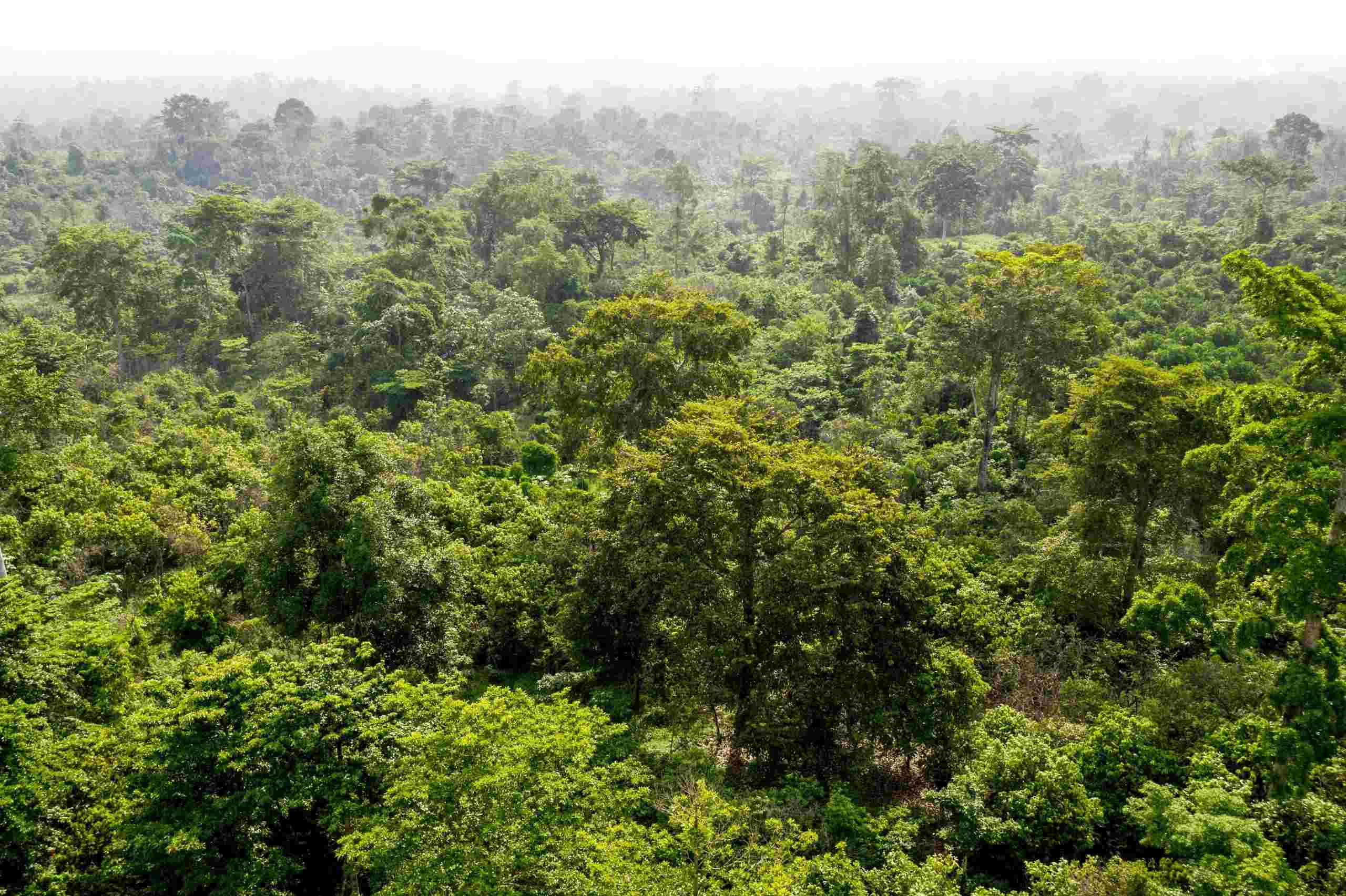Home>Weather and Climate>Understanding Australia’s Summer Climate


Weather and Climate
Understanding Australia’s Summer Climate
Published: March 2, 2024
Gain insights into Australia's summer weather and climate patterns. Understand the factors influencing the country's seasonal climate variations. Discover how weather and climate impact Australia during the summer months.
(Many of the links in this article redirect to a specific reviewed product. Your purchase of these products through affiliate links helps to generate commission for Temperatures.com, at no extra cost. Learn more)
Table of Contents
The Characteristics of Australia's Summer Climate
Australia's summer climate is characterized by a diverse range of weather patterns and conditions, influenced by its vast size and unique geographical features. As the southern hemisphere experiences summer from December to February, Australia encounters a distinct set of climatic phenomena during this period.
1. Intense Heat and Dryness
During the summer months, Australia experiences scorching temperatures and arid conditions across much of the continent. The inland regions, particularly the Outback, endure blistering heat, with temperatures often soaring above 40 degrees Celsius (104 degrees Fahrenheit). This extreme heat is a defining feature of Australia's summer climate, contributing to the country's reputation for having some of the hottest and driest conditions on Earth.
2. Monsoonal Rainfall in the North
In stark contrast to the aridity of the interior, the northern regions of Australia, including the tropical north and parts of Queensland, experience the onset of the monsoon season during summer. This brings heavy rainfall, thunderstorms, and the potential for cyclones, replenishing the landscape and supporting the lush vegetation characteristic of these areas.
3. Bushfires and Drought
The combination of high temperatures, low humidity, and dry vegetation creates a heightened risk of bushfires during Australia's summer months. The southern and eastern states are particularly susceptible to bushfires, with the dry, windy conditions exacerbating the threat. Additionally, prolonged periods of low rainfall can lead to drought conditions, impacting agricultural productivity and water resources.
4. Coastal Breezes and Severe Storms
Australia's extensive coastline influences its summer climate, with coastal areas experiencing milder temperatures due to sea breezes. However, these regions are also susceptible to severe storms, including thunderstorms, hail, and heavy rainfall, which can lead to localized flooding and infrastructure damage.
Read more: Melbourne Australia’s Current Temperature
5. Climate Variability
Australia's summer climate exhibits significant variability from year to year, influenced by natural climate phenomena such as the El Niño and La Niña cycles. These climate patterns can result in contrasting weather conditions across the country, affecting rainfall patterns, temperatures, and the frequency of extreme events.
In summary, Australia's summer climate is characterized by extreme heat, contrasting rainfall patterns, the threat of bushfires and drought, coastal influences, and climate variability. Understanding these characteristics is crucial for residents, policymakers, and environmental managers in preparing for and mitigating the impacts of Australia's dynamic summer weather.
Factors Influencing Australia's Summer Weather
Australia's summer weather is influenced by a myriad of factors, shaping the diverse climatic conditions experienced across the continent during this season. These factors play a pivotal role in determining the intensity of heat, the occurrence of rainfall, and the prevalence of extreme weather events. Understanding the key influencers of Australia's summer weather is essential for comprehending the dynamic nature of the country's climate.
- Southern Oscillation Index (SOI)
The Southern Oscillation Index, a measure of the atmospheric pressure difference between Tahiti and Darwin, is a critical determinant of Australia's summer weather patterns. It is closely linked to the El Niño and La Niña phenomena, which exert significant influence on the distribution of rainfall and temperatures across the continent. A positive SOI typically corresponds to La Niña conditions, bringing increased rainfall to parts of Australia, while a negative SOI is associated with El Niño, leading to drier and hotter conditions.
- Indian Ocean Dipole (IOD)
The Indian Ocean Dipole, characterized by the difference in sea surface temperatures between the western and eastern Indian Ocean, also contributes to Australia's summer weather variability. A positive phase of the IOD is associated with cooler sea surface temperatures in the western Indian Ocean, leading to reduced rainfall in Australia's northwest and increased likelihood of drought. Conversely, a negative phase of the IOD can result in above-average rainfall in parts of Australia, particularly in the northwest and central regions.
- Tropical Cyclones
During the Australian summer, the occurrence of tropical cyclones in the northern regions significantly impacts the weather patterns. These intense low-pressure systems bring heavy rainfall, strong winds, and storm surges, affecting coastal areas and potentially causing widespread damage. The frequency and intensity of tropical cyclones can vary from year to year, influencing the distribution of rainfall and contributing to the overall summer weather patterns.
- Southern Annular Mode (SAM)
The Southern Annular Mode, which describes the north-south movement of the westerly wind belt surrounding Antarctica, also influences Australia's summer weather. When the SAM is in a positive phase, the westerly winds contract towards Antarctica, leading to reduced rainfall in parts of southern Australia. Conversely, a negative phase of the SAM can result in enhanced rainfall and milder temperatures in these regions.
- Local Geographic Features
Australia's diverse geography, including its vast deserts, mountain ranges, and extensive coastline, plays a crucial role in shaping the summer weather patterns. The influence of local geographic features on temperature gradients, wind patterns, and rainfall distribution contributes to the spatial variability of Australia's summer climate, creating distinct microclimates across the continent.
In summary, the interplay of the Southern Oscillation Index, Indian Ocean Dipole, tropical cyclones, Southern Annular Mode, and local geographic features collectively influences Australia's summer weather, contributing to the country's climatic diversity and variability during this season. These factors underscore the complexity of Australia's summer climate and the need for ongoing monitoring and adaptation to the dynamic weather patterns experienced across the continent.
Impact of Australia's Summer Climate on the Environment
Australia's summer climate exerts a profound impact on the country's diverse and fragile ecosystems, influencing the flora, fauna, and overall environmental dynamics. The extreme heat, variable rainfall patterns, and the occurrence of natural hazards during the summer months significantly shape the environmental landscape, presenting both challenges and opportunities for the country's unique ecosystems.
1. Ecosystem Stress and Adaptation
The intense heat and prolonged dry spells characteristic of Australia's summer climate place considerable stress on terrestrial and aquatic ecosystems. Native vegetation, particularly in arid and semi-arid regions, faces water scarcity and heightened risk of bushfires, impacting plant productivity and biodiversity. Similarly, freshwater ecosystems, including rivers and wetlands, experience reduced water availability, affecting aquatic species and the overall ecological balance.
2. Biodiversity and Habitat Dynamics
Australia's diverse range of habitats, from tropical rainforests to arid deserts, responds differently to the summer climate. The increased frequency and intensity of bushfires in certain regions can lead to habitat destruction and fragmentation, posing a threat to endemic species and their survival. Conversely, the monsoonal rainfall in the northern parts of the country supports lush vegetation and provides essential habitat and breeding grounds for various wildlife species.
3. Coastal Vulnerability and Resilience
The coastal ecosystems of Australia are particularly vulnerable to the impacts of the summer climate, including sea-level rise, extreme weather events, and ocean acidification. Rising temperatures and changing rainfall patterns can influence the distribution of marine species and coral reef ecosystems, while severe storms and cyclones pose risks to coastal infrastructure and biodiversity. However, these ecosystems also demonstrate resilience, with mangroves and seagrass beds playing a crucial role in coastal protection and carbon sequestration.
4. Agricultural Productivity and Water Resources
Australia's agricultural sector is intricately linked to the summer climate, with the availability of water and the occurrence of extreme weather events directly influencing crop yields, livestock management, and overall food production. Drought conditions and heatwaves can lead to water shortages, soil degradation, and reduced agricultural productivity, impacting rural communities and the broader economy. Effective water management and sustainable agricultural practices are essential for mitigating these challenges and building resilience in the face of climatic variability.
5. Conservation and Management Strategies
The impact of Australia's summer climate on the environment underscores the importance of proactive conservation and adaptive management strategies. This includes targeted fire management practices, habitat restoration efforts, and the implementation of climate-resilient agricultural techniques. Additionally, the integration of traditional ecological knowledge and modern scientific approaches is crucial for understanding and addressing the complex interactions between the summer climate and the environment.
In summary, Australia's summer climate exerts multifaceted impacts on the country's environment, influencing ecosystems, biodiversity, coastal resilience, agricultural systems, and conservation strategies. Recognizing and addressing these impacts is essential for fostering environmental sustainability and resilience in the face of ongoing climatic challenges.
Coping with Australia's Summer Heatwaves
Australia's summer heatwaves present significant challenges for individuals, communities, and infrastructure, requiring proactive measures to mitigate the impacts of extreme heat. Coping with these heatwaves involves a combination of preparedness, adaptive strategies, and community resilience to safeguard public health and well-being.
1. Public Health Initiatives
Public health initiatives play a crucial role in coping with Australia's summer heatwaves. Health authorities and local governments implement heatwave response plans, providing guidance on staying cool, staying hydrated, and recognizing the signs of heat-related illnesses. These initiatives also focus on vulnerable populations, including the elderly, young children, and individuals with pre-existing health conditions, ensuring access to cooling centers and support services during periods of intense heat.
2. Urban Planning and Infrastructure
Urban planning and infrastructure design are essential for coping with heatwaves in urban areas. The integration of green spaces, shade structures, and cool pavements helps mitigate the urban heat island effect, reducing the overall temperature and enhancing outdoor comfort. Additionally, the implementation of heat-resilient building materials and energy-efficient design principles contributes to creating more thermally comfortable indoor environments, reducing the reliance on air conditioning and minimizing energy consumption during heatwaves.
3. Community Engagement and Support
Community engagement and support networks play a vital role in coping with heatwaves, fostering social cohesion and mutual assistance during extreme heat events. Community organizations, local councils, and emergency services collaborate to raise awareness about heatwave risks, distribute essential resources such as water and fans to those in need, and provide information on heatwave safety measures. Engaging with diverse community groups and promoting inclusive approaches to heatwave preparedness enhances the resilience of neighborhoods and strengthens social support networks.
Read more: How Hot Does It Get in Canada During Summer?
4. Early Warning Systems
Early warning systems and communication strategies are instrumental in coping with Australia's summer heatwaves. Meteorological agencies and emergency management authorities issue heatwave alerts and advisories, enabling individuals and organizations to take proactive measures in response to forecasted extreme heat. These systems facilitate timely dissemination of information, empowering the public to make informed decisions and adapt their activities to minimize heat-related risks.
5. Personal Preparedness
Individuals also play a pivotal role in coping with heatwaves by adopting personal preparedness measures. This includes staying informed about weather forecasts, staying hydrated, seeking shade during peak heat hours, and modifying daily routines to avoid prolonged exposure to high temperatures. Personal responsibility and proactive behavior contribute to reducing the overall impact of heatwaves on public health and well-being.
In summary, coping with Australia's summer heatwaves necessitates a multi-faceted approach encompassing public health initiatives, urban planning, community engagement, early warning systems, and personal preparedness. By integrating these strategies, individuals and communities can effectively mitigate the impacts of extreme heat events, fostering resilience and safeguarding the population during the hot summer months.
Climate Change and Australia's Summer Weather
Climate change has emerged as a defining factor influencing Australia's summer weather patterns, contributing to shifts in temperature extremes, rainfall variability, and the frequency of extreme weather events. The impact of climate change on Australia's summer climate is multifaceted, encompassing both direct and indirect consequences that pose significant challenges for the country's environment, economy, and society.
1. Rising Temperatures and Heat Extremes
One of the most pronounced effects of climate change on Australia's summer weather is the trend of rising temperatures and increased frequency of heat extremes. The warming climate has led to more frequent and intense heatwaves, amplifying the risk of heat-related illnesses, stressing infrastructure, and impacting agricultural productivity. The prolonged exposure to extreme heat poses substantial challenges for public health and necessitates adaptive measures to safeguard vulnerable populations.
2. Altered Rainfall Patterns and Drought Risks
Climate change has also influenced Australia's summer rainfall patterns, contributing to shifts in precipitation distribution and the occurrence of prolonged droughts. Certain regions have experienced reduced summer rainfall, exacerbating water scarcity, impacting ecosystems, and posing challenges for water resource management. The heightened risk of drought associated with changing rainfall patterns underscores the need for sustainable water conservation strategies and adaptive agricultural practices.
3. Intensified Bushfire Threat
The interaction of climate change with Australia's summer weather has heightened the risk of bushfires, particularly in the context of prolonged heatwaves, reduced moisture levels, and increased fuel load. The extended fire seasons and the occurrence of more extreme fire weather days have significant implications for ecosystem resilience, air quality, and community safety. Addressing the complex interplay between climate change and bushfire risk requires integrated approaches encompassing fire management, land-use planning, and climate adaptation measures.
4. Coastal Vulnerability and Sea-Level Rise
Australia's coastal regions are increasingly vulnerable to the impacts of climate change, including sea-level rise, coastal erosion, and the intensification of storm surges. The implications of these changes for Australia's summer climate are far-reaching, affecting coastal ecosystems, infrastructure, and community resilience. Proactive coastal adaptation strategies, informed by climate science and risk assessment, are essential for mitigating the impacts of sea-level rise and enhancing the long-term sustainability of coastal areas.
5. Adaptation and Resilience Imperatives
In response to the evolving dynamics of Australia's summer weather driven by climate change, there is a growing imperative to prioritize adaptation and resilience-building efforts. This encompasses the integration of climate considerations into urban planning, infrastructure development, natural resource management, and emergency response strategies. Embracing climate-resilient practices and fostering adaptive capacity at individual, community, and institutional levels are essential for navigating the complexities of Australia's changing summer climate.
In essence, the influence of climate change on Australia's summer weather underscores the need for proactive mitigation of greenhouse gas emissions, coupled with robust adaptation measures to address the ongoing impacts. Embracing a holistic approach that integrates scientific insights, policy innovation, and community engagement is crucial for navigating the complexities of Australia's evolving summer climate in the context of a changing climate landscape.










